YOU ARE LEARNING:
Significant Figures

Significant Figures
Significant figures give us a general way to round numbers of any size to make them more readable.
How far is the drive from London to Rome?

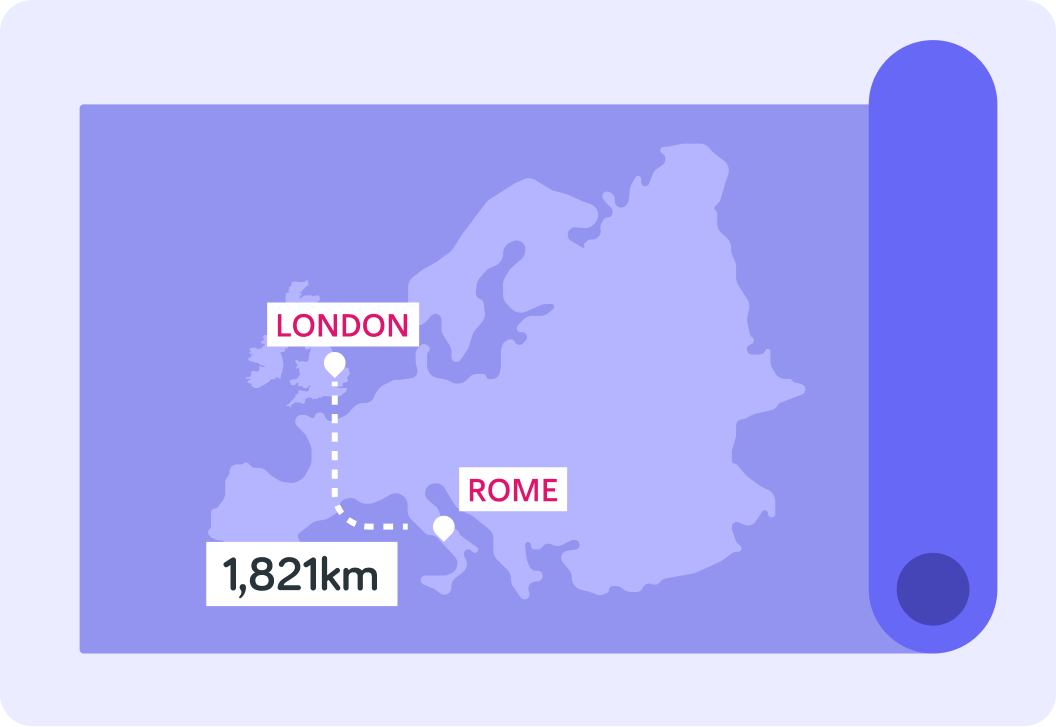
Now, to the nearest 100 kilometres, there are ______________ between London and Rome.
A) 2,000 km B) 1,900 km C) 1,800 km


So you can give the distance from London to Rome as 1,821 km or slightly less precisely as 1,800 km
1,800 km might just be a little easier to remember, and 21 km more or less is just not that significant at these distances.
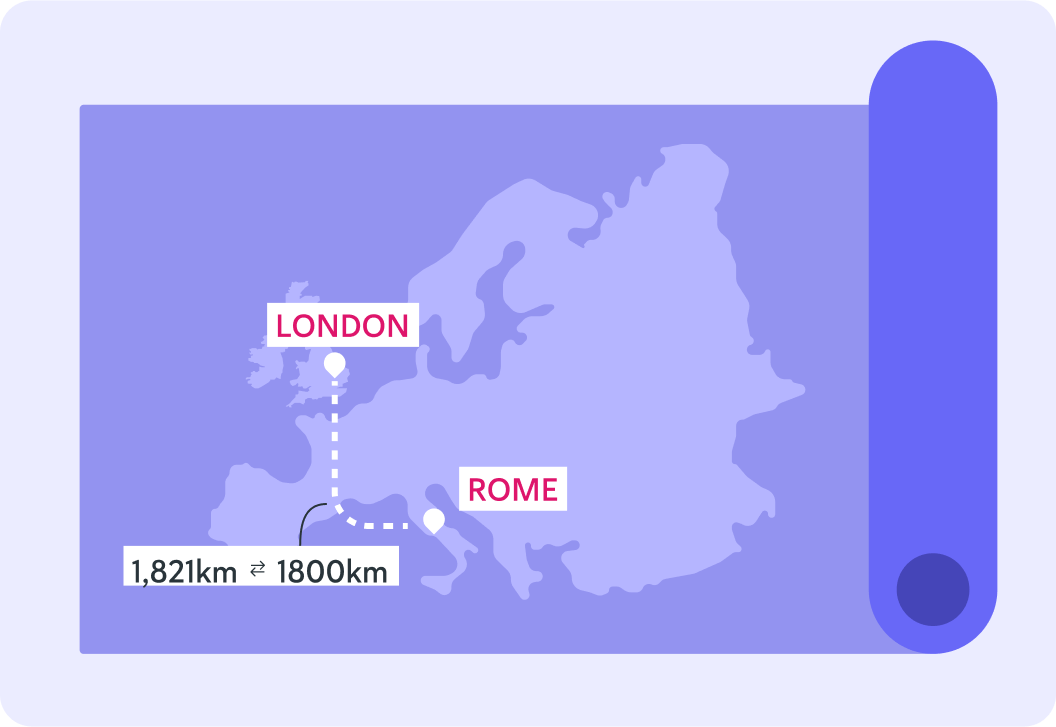
How far is the drive from London to Vienna?

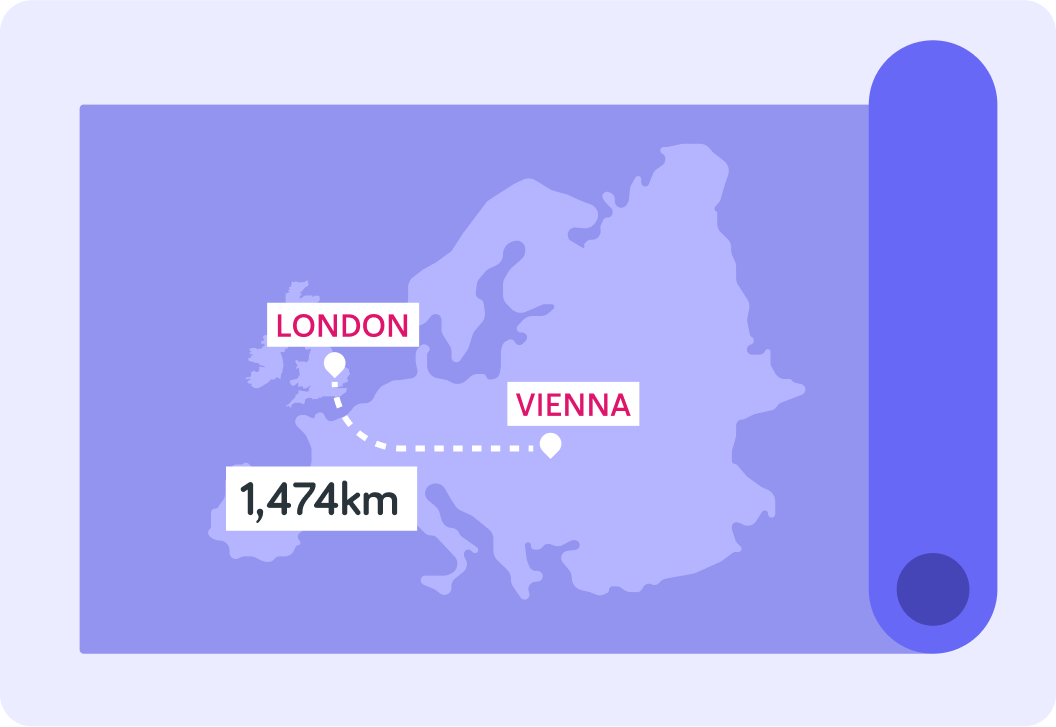
Now, 100 kilometres more or less is not really that significant, so what is the distance between London and Vienna to the nearest 100 kilometres?
A) 1,500 km B) 1,470 km C) 1,400 km


So you can give the distance from London to Vienna as 1,474 km or slightly less precisely as 1,500 km
1,500 km might just be a little easier to remember, and 26 km more or less is just not that significant at these distances.
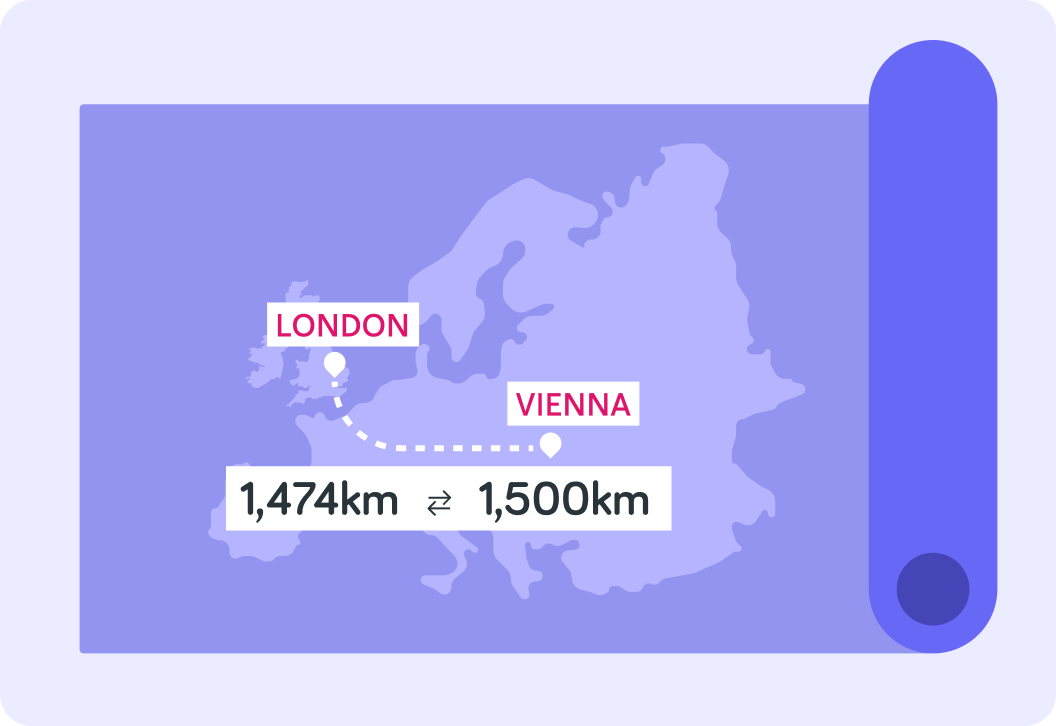
For both trips, you rounded off the distance from 4 significant figures (SF) to just 2 significant figures
London - Rome to 4 SF: 1,821 km London - Rome to 2 SF: 1,800 km
London - Vienna to 4 SF: 1,474 km
London - Vienna to 2 SF: 1,500 km
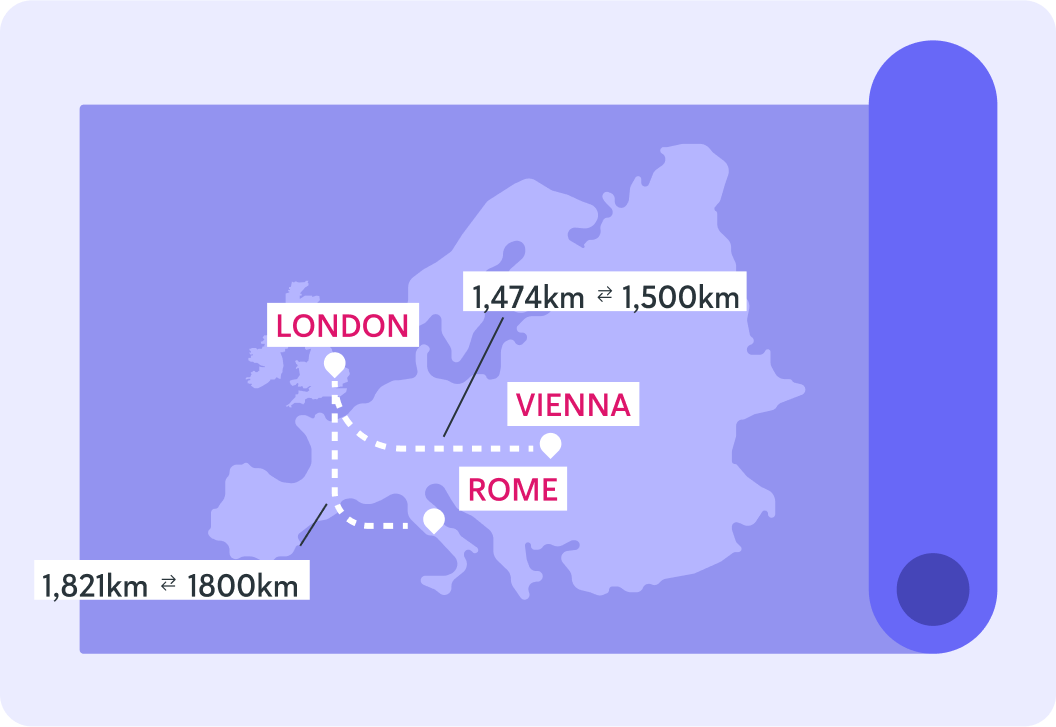
1,821 km has 4 SF, but 1,800 km has only 2 SF. That means that zeros at the end of whole numbers ______ count as significant figures.

Imagine you have measured this table to 152 cm. How many significant figures does that contain?

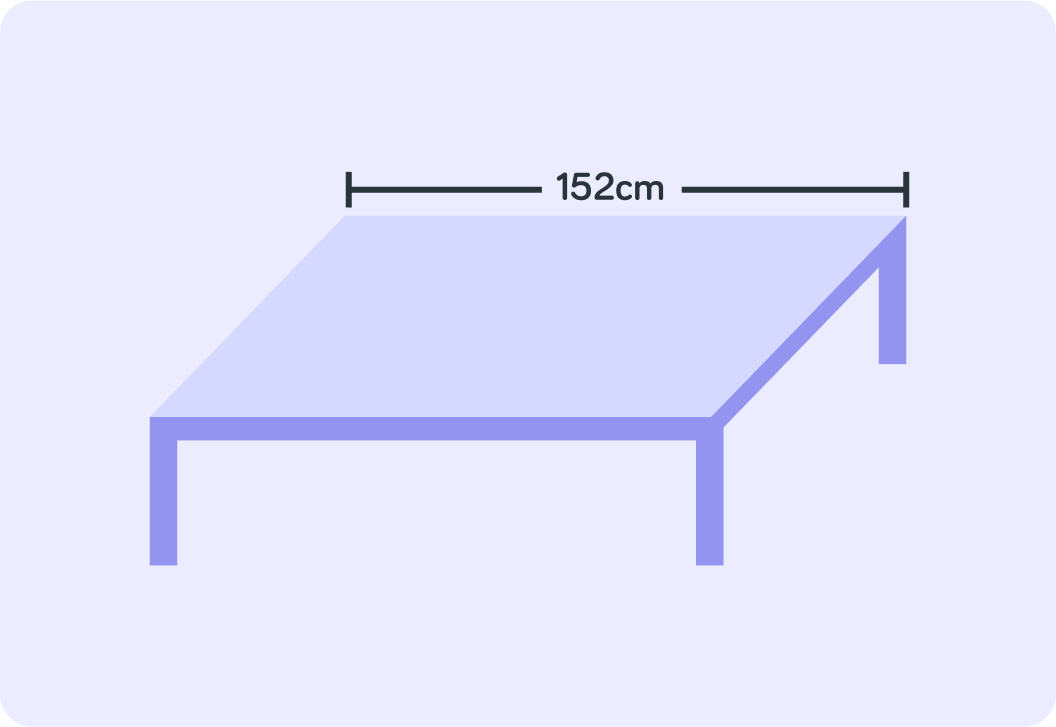
What if you had given your measurement as 152.00 cm instead of just 152 cm?
The .00 makes it clear that the table is measured to precisely 152 cm - not 152.1 cm for example.
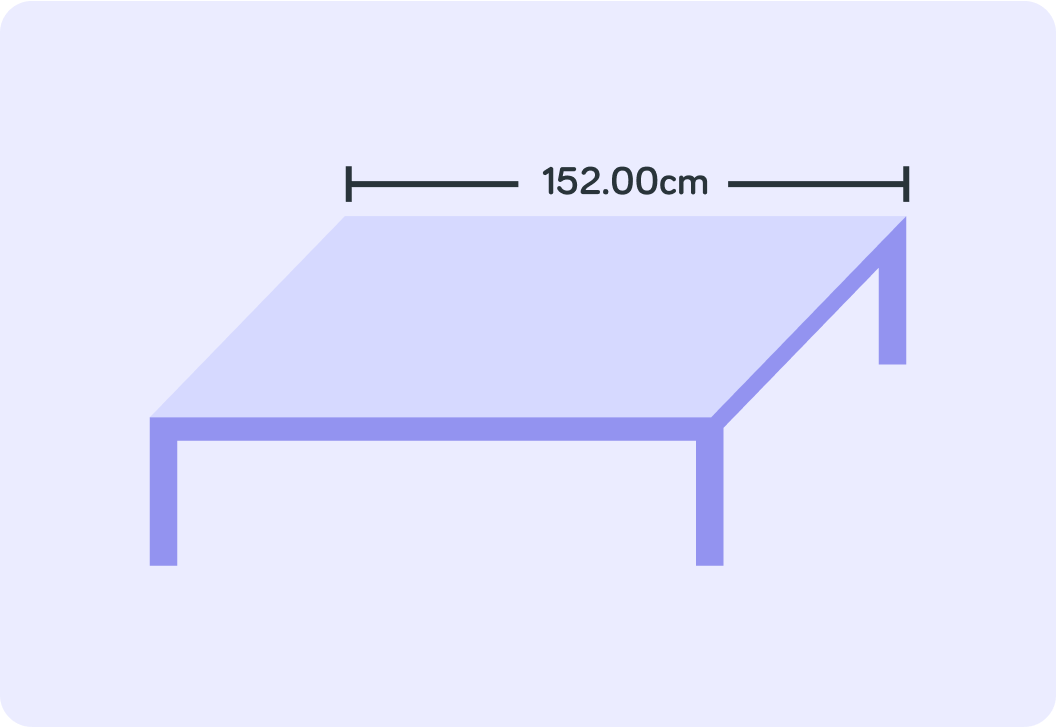
So the .00 in 152.00 cm says something about how precise this measurement is. Should they be considered as significant figures? Answer yes or no.


Zeros after the decimal point count as significant figures
They say something about how precise a number really is.

How many significant figures does 152.00 cm contain, then?


What if you didn't have to be that precise and you were told to round off 152.00 cm to just 3 SF. What would it be?


What if you could be even less precise and were asked to round off 152.00 cm to just 2 SF. What would that be?


So you can give your measurement of the table more precisely or less precisely depending on the number of significant figures
The more significant figures you give, the more important it is that the table is exactly 152.00 cm
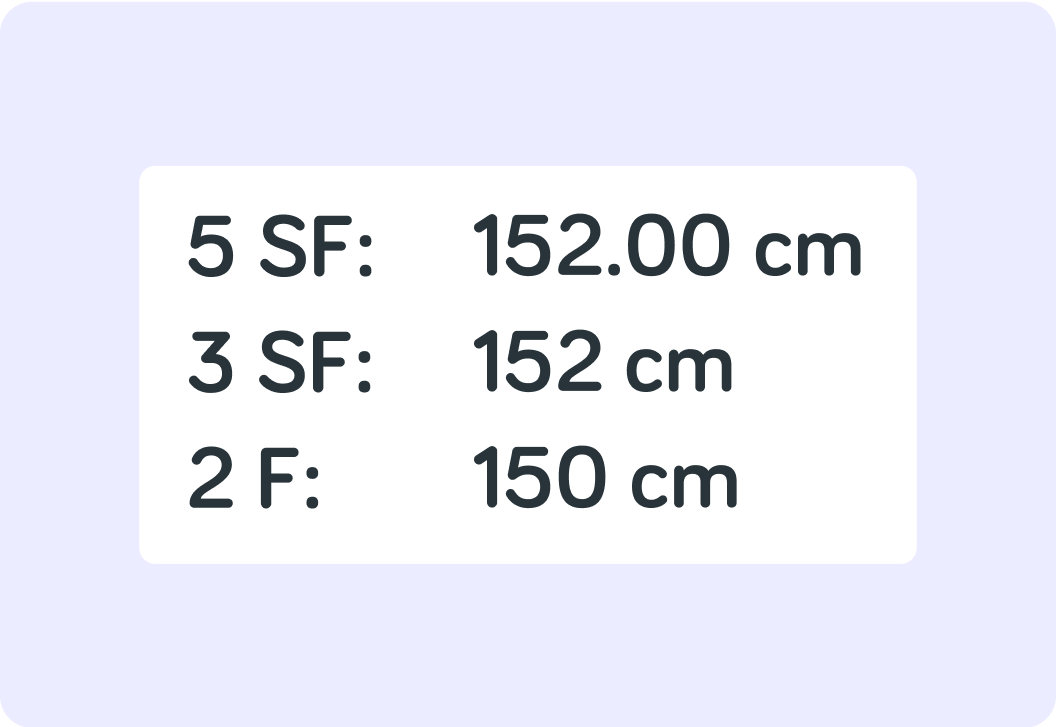
Why would you not always just give the most precise measure you have?
Why would you ever decide that some figures are not really that significant?
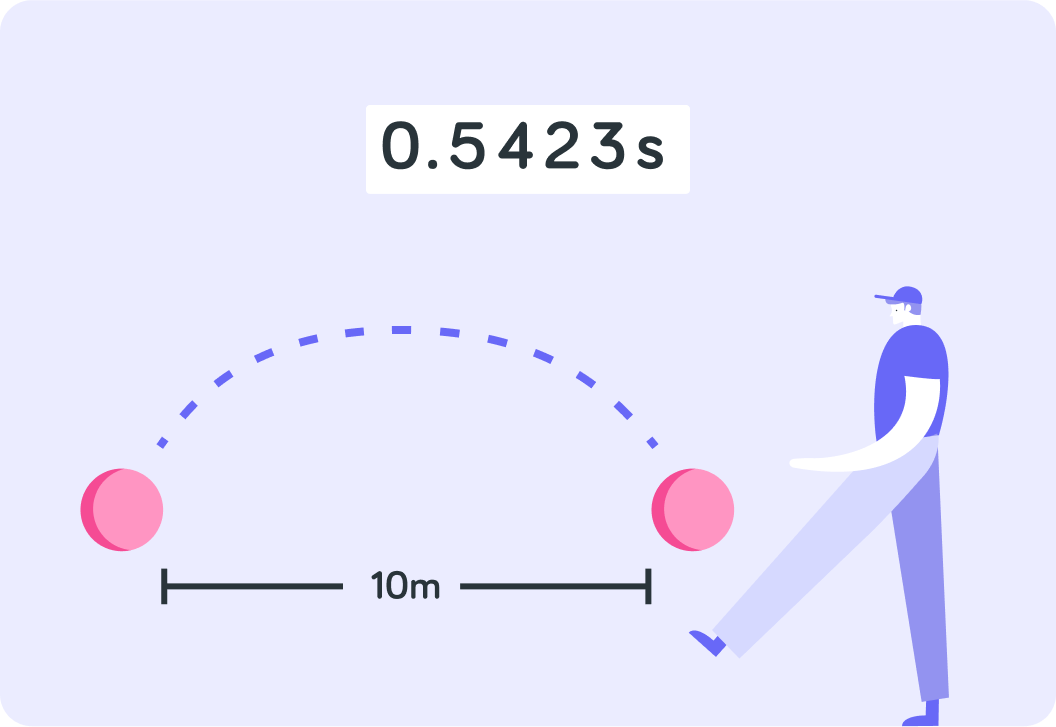
Imagine you measure how fast your friend can kick a football 10 metres
You start the stopwatch when you see his foot kick the ball. You stop the stopwatch when you see the ball cross the 10 metre line.

The stopwatch says 0.5423 s. Is it likely that your measurement is really that precise? Answer yes or no.


There is a lot of uncertainty in this measurement!
For example, your reaction time on the stopwatch will have affected the measurement, so you can't really say that it took exactly 0.5423 s for your friend to kick the ball 10 metres.

Would it be reasonable to say that it took about 0.5 s for your friend to kick the ball 10 metres? Answer yes or no.


0.5 s has fewer significant figures, but is probably more "true" actually than 0.5423 s
It doesn't pretend to be more precise than it necessarily is.

Recap! You might want to round off to fewer significant figures if the number doesn't have to be super precise
For example, whether it's a 1,820 km or a 1,800 km drive from London to Rome, probably isn't that significant.

You might want to round off to fewer significant figures if the number actually cannot be as precise as it appears
For example, you friend probably didn't kick a football 10 metres in exactly 0.5423 s. It's probably actually more "true" to simply say it took 0.5 s

You might want to specify more significant figures to make it really clear that something does actually have to be very precise!
For example, if you give 152 cm to 5 SF like this 152.00 cm you are saying:
"It's not even 152.1 cm. It's actually exactly 152.00 cm!"

Significant figures start from the first non-zero figures in the number
So 0.0824 has 3 SF. The zeros at the beginning of the number do not count!
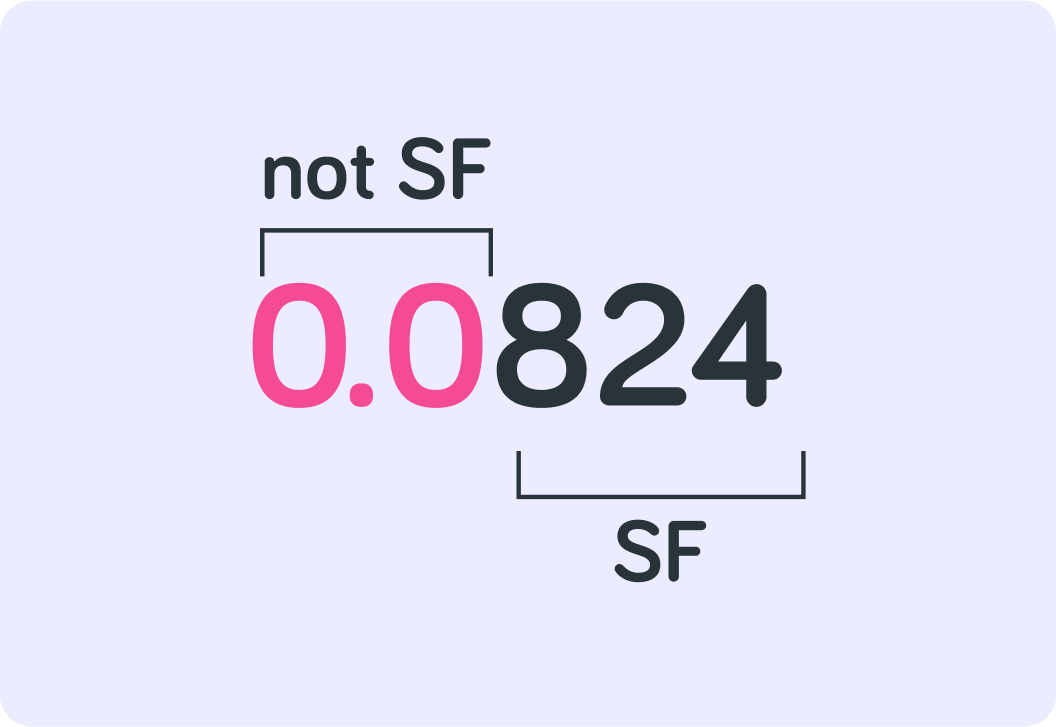
Zeros at the end of whole numbers do not count as significant
So 759,324 has 6 SF, whereas 759,000 has only 3 SF.
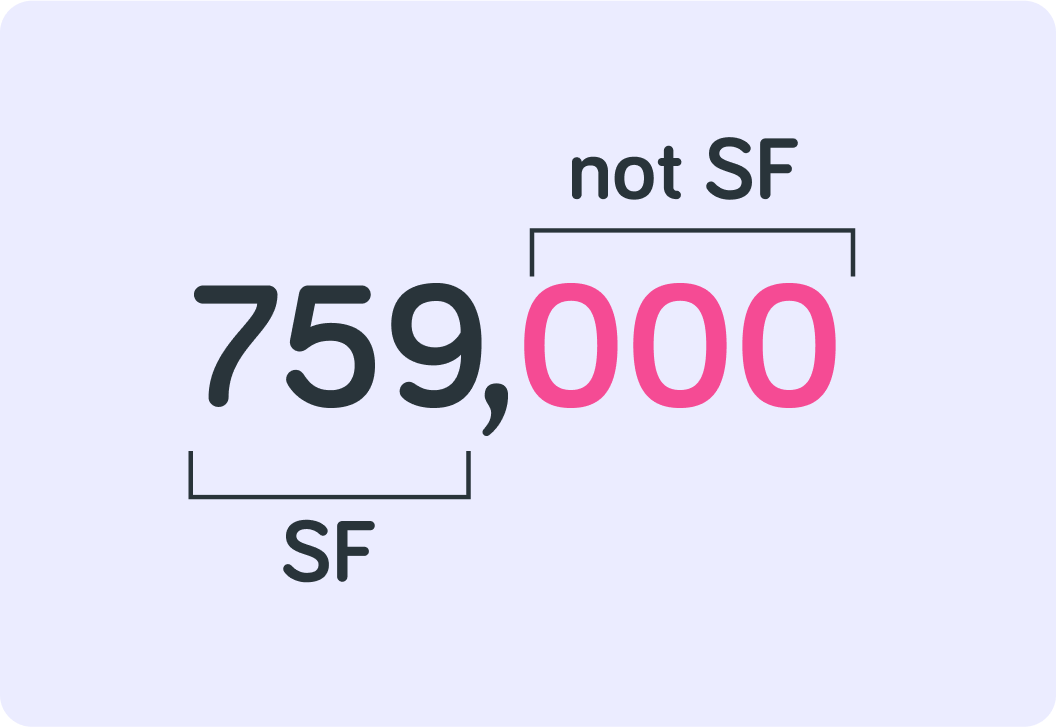
However! Zeros after the decimal point do count as significant figures
So 759,000 has only 3 SF, but 759,000.00 has 8 SF!
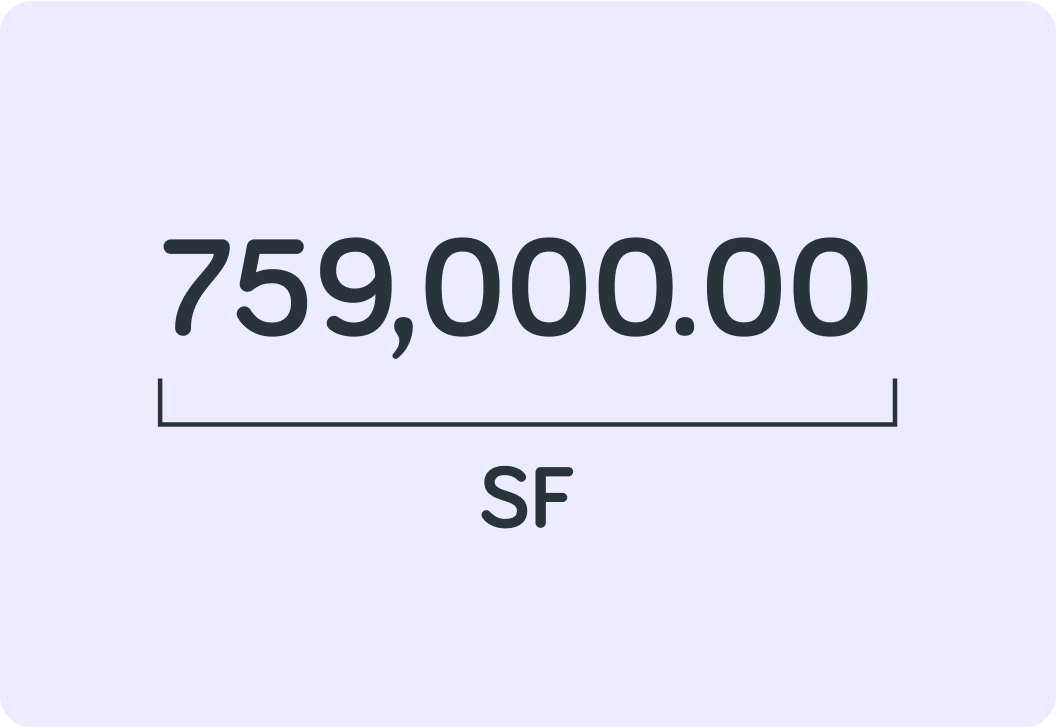
Finally, zeros in-between significant figures count as significant too.
So the 0 in 3,078.56 is significant, so this number has 6 SF.
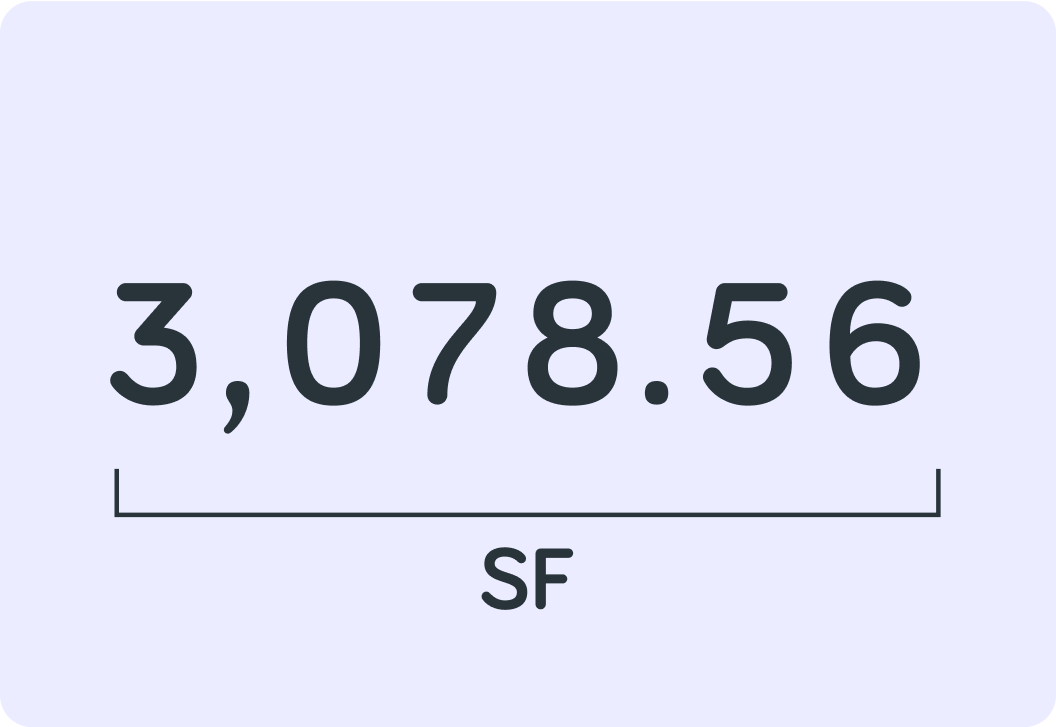
Now, 0.00456 has only 3 significant figures. Which figures do you think are the significant ones?

How many significant figures are there in 9,607,845?

How many significant figures are there in 62,840?

How many significant figures are there in 0.0000045891?

How many significant figures are there in 0.006078120?

How do you actually round off numbers to a certain amount of significant figures?
Which number to 3 SF is 785,943 closer to?

What about rounding off 5,712 to 2 SF? Which number is 5,712 closer to?

Now, what if you are exactly between two numbers, like rounding off 32,500 to 2 SF. Do you think you round up or down?

So when you are exactly between two numbers you round up
For example, rounding off 32,500 to 2 SF gives 33,000, not 32,000
Recap! When you round off to for example 2 significant figures, you look at the figure that follows the 2nd significant figure
Then you decide if you need to round the 2nd significant figure up or if you should leave it.

If the following figure is smaller than 5, you don't change the figure before it
So here, 3,242 is rounded off to 3,200 with 2 SF, not to 3,300

If the following figure is 5 or greater than 5, you make the figure before it 1 bigger
So here, 3,252 is rounded off to 3,300 with 2 SF, not to 3,200

Round 900.12 to 3 SF.

Round 8,790,652 to 1 SF.

Round off 0.00014512 to 2 SF.

Summary! Significant figures (SF) are about how precise or exact a number is
The more significant figures, the more exact the number.

All zeros before a non-zero figure are never significant
For example, none of the zeros that come before the 6 here count as significant, so this number has only 2 SF.

Zeros at the end of a whole number also don't count as significant
For example, the 0 in 93,870 is not significant, so 93,870 has only 4 SF.

Zeros as decimals after whole numbers are significant though!
For example, all figures in 516.30 are significant, which means this number has 5 SF.

Zeros that are in-between significant figures always count as significant
For example, the 0 in 405,689.17 is significant, so this number has 8 SF.

When you round to significant figures, you need to look at the following figure
If the figure is smaller than 5, you don't round up. If the figure is equal to or greater than 5, you do round up.

